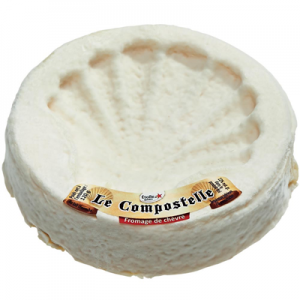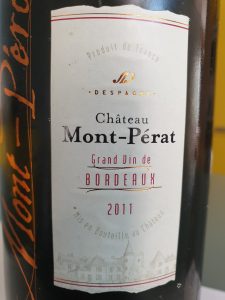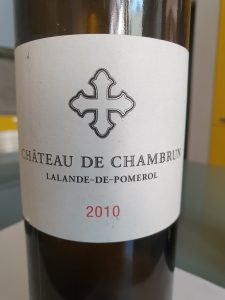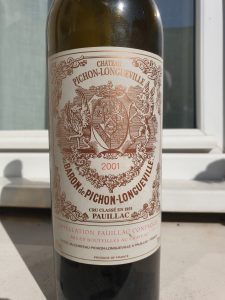A friend from Philadelphia I met on the Camino de Santiago in June came to dinner at my house last week and this was, of course, an occasion for defending the honor of Bordeaux wines.
As is often the case in Bordeaux, we kicked off with Champagne. This was a 2005 Pierre Gimonnet – a fresh, restrained, easy-to-drink wine with good minerality.
The first course was a salade tiède of scallops. Consisting of hot food (for instance: bacon bits, duck gizzards, duck hearts, lentils, etc.) served on a bed of greens, “lukewarm salads” are typical of cuisine in Southwest France. One with scallops was especially appropriate here since the scallop shell has been the symbol of pilgrims for centuries. The greens were mâche (lamb’s lettuce) and the scallops were coated with a vanilla cream sauce.
The wine to accompany this was a 2011 Château Mont Pérat AOC Bordeaux blanc. I always try to showcase the dry white wines of Bordeaux when visitors come to my house because these wines are little known and suffer from a mixed reputation. And as much as I adore the great growths, I also like to show how good the less-exalted, and more affordable wines can be. In the event, this wine paired beautifully with the seafood salad. It had also benefited from bottle age, acquiring complexity and honeyed nuances, and was sufficiently rich to complement the food.
Mont Pérat is a huge estate (a hundred hectares) in Capian, in the Premières Côtes region. The white wine is made with 65% Sémillon, 12% Sauvignon Blanc, and 4% Muscadelle.
Continuing in the vein of regional cuisine, the main course was entrecôte steak cooked over vine cuttings. This was served the traditional way, with a sauce made of bone marrow, shallots, and parsley – a failproof choice for accompanying the 2010 Château de Chambrun, Lalande-de-Pomerol.
I have a soft spot for this appellation and have been inducted into their vinous brotherhood, Les Baillis.
When I first arrived in Bordeaux, Lalande-de-Pomerol was sold at a similar price to Bordeaux Supérieur. No longer. The wines have improved greatly and the huge demand for Pomerol has spilled over into Lalande.
Owned for years by the Janoueix family, then by Silvio Denz, 7-hectare Château de Chambrun now belongs to the owners of Château Moncets in the same appellation. The grape varieties are 95% Merlot and 5% Cabernet Franc.
Steak calls for a hearty wine and this Chambrun certainly fit the bill. In fact, it seemed like a fusion of the New and Old worlds. The color was very dark and the alcoholic degree was 15%! While the wine was chunky, almost meaty on the palate, and with plenty of heft, it nevertheless had the hallmarks of fine Bordeaux. In other words, while not for the fainthearted, it was a wine of elegance. At age 9 it was showing well, but will continue to improve.
Few people who tasted this wine blind would guess its origin. It most definitely had the hallmarks of Bordeaux, but far more those of Pomerol than of its less prestigious neighbor. Every good meal in France has a cheese course and there are always at least four at my house. When I went to the local cheese shop, I was amazed to discover one called Compostelle. This goat’s milk cheese has the impression of a scallop shell – a no-brainer for a meal bringing together pilgrims who had walked to Santiago!
Every good meal in France has a cheese course and there are always at least four at my house. When I went to the local cheese shop, I was amazed to discover one called Compostelle. This goat’s milk cheese has the impression of a scallop shell – a no-brainer for a meal bringing together pilgrims who had walked to Santiago!
The last red wine of the evening was a 2001 Château Pichon Baron. I love this château, a classic Pauillac, and am a fan of the 2001 vintage, somewhat overshadowed by the bigger, more upfront 2000. 2001 is what the Bordelais call an “Atlantic vintage”, meaning one that reflects the climate of a typical year with wet and cool periods, leading to wines with lower alcohol and fresh acidity. This was certainly the case with this Pichon Baron. It had a beguiling nose of humus, truffle, and telltale Pauillac graphite. The wine was eminently drinkable, i.e. a little on the light side, with a lovely aftertaste. A pure delight.



